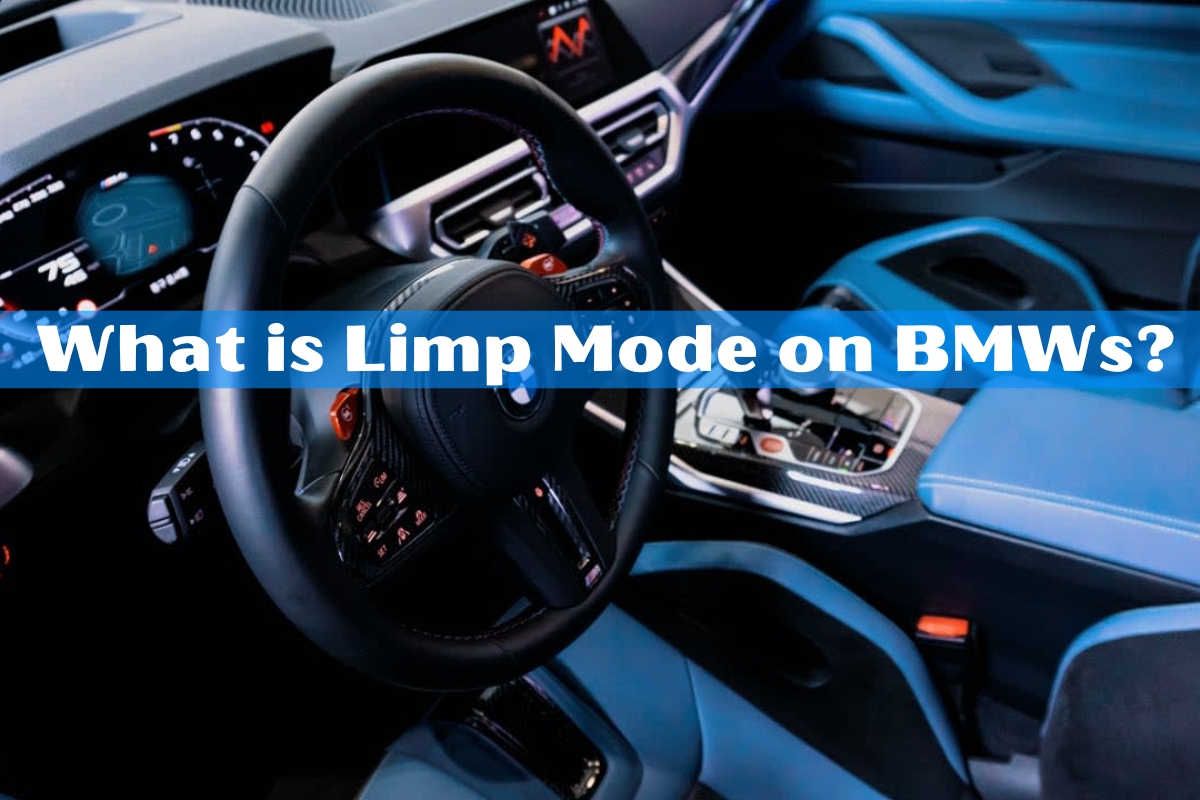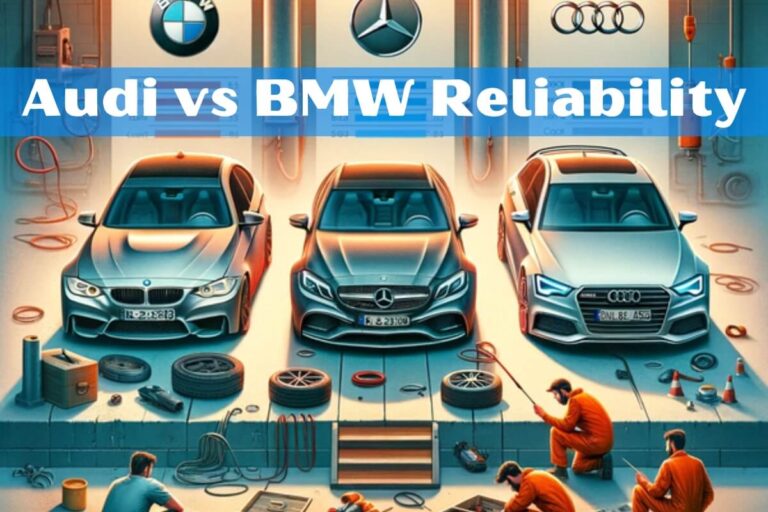What is Limp Mode on BMWs? A Complete Guide

If your BMW has suddenly lost power and the check engine light is on, it may have entered limp mode. But what exactly is limp mode on BMWs, and what should you do if it happens? This guide will cover everything you need to know about this protective feature and how to handle it properly.
Limp mode, also known as limp home mode or safe mode, is a built-in security measure in BMWs designed to protect the engine and transmission from further damage. When something goes wrong with critical components, the vehicle’s control units activate limp mode to limit performance and functions until the issue can be diagnosed and fixed.
So what precisely does limp mode entail for your BMW? What causes it? And how can you get your vehicle back to normal operation? Let’s dive into the details.
What Exactly is Limp Mode on BMWs?
Limp mode is automatically triggered when the engine control unit (ECU) or transmission control unit (TCU) detects a potential problem or fault. These control modules constantly monitor data from various sensors to ensure everything is operating within normal parameters.
If abnormal signals are received indicating a fault, the control units go into a protective state – limp mode – to prevent further damage to the engine, transmission, and other components. This is achieved by:
- Reducing engine power and torque output
- Limiting the maximum RPM range (usually 2000-3000 RPM)
- Restricting the transmission to lower gears (often 3rd gear or below on automatics)
- Disabling non-essential functions like air conditioning to reduce load
Essentially, limp mode turns off all performance driving features and cuts power significantly to let you safely “limp” the vehicle to a repair shop or off the road without risking engine failure or an accident.
Symptoms of Limp Mode on Your BMW
If your BMW has entered limp mode, it will exhibit several telltale symptoms:
- The check engine or transmission warning lights come on
- You experience a severe loss of power and acceleration
- The maximum RPM range is severely limited (feels like it’s stuck around 2000-3000 RPM)
- For automatic transmissions, the car may be stuck in a single gear like 3rd
Additionally, some auxiliary functions may be disabled to reduce the load, so you could notice:
- Air conditioning or climate control no longer working
- Radio, navigation, and other electronics turning off
Other potential symptoms include difficulty maintaining higher speeds, shuddering or rough shifting in automatics, and increased fuel consumption due to the inefficient operating state.
Common Causes of Limp Mode in BMWs
Limp mode can be triggered by a variety of issues related to the engine, transmission, brakes, fluids, or electrical systems. Some common culprits include:
- Faulty Sensors: Sensors like the mass airflow (MAF), throttle position (TPS), camshaft position, crankshaft position, etc. feed data to the control units. A failing sensor sending incorrect information can cause limp mode.
- Wiring Issues: Problems with wiring harnesses or electrical connections, such as shorts, breaks, or corrosion, may result in abnormal readings that activate limp mode.
- Low Fluid Levels: Insufficient engine oil, transmission fluid, coolant, or other critical fluids can prompt limp mode before serious damage occurs.
- Transmission Problems: Issues like failed solenoids, slipping clutch packs, or other transmission faults often lead to limp mode engagement.
- Engine Issues: Problems like misfires, turbo underboost, vacuum leaks, timing issues, or anything disrupting engine operation can trigger limp mode.
- Brake System Malfunctions: Limp mode may activate if the brake system control module detects an ABS sensor failure or hydraulic issue.
Sensor-Related Limp Mode Causes
Since faulty sensors are a frequent cause, it’s worth understanding which ones are most commonly involved. The mass airflow (MAF) sensor monitors airflow into the engine and is critical for proper fuel metering. A failing MAF may cause limp mode, lean conditions, hesitation, or stalling.
The throttle position sensor (TPS) tracks throttle plate opening and is another sensor that can instigate limp mode if faulty readings are sent to the ECU. Other potential sensor culprits are camshaft and crankshaft position sensors, manifold absolute pressure (MAP) sensor, oxygen sensors, and more.
Transmission Issues Causing Limp Mode
For automatic transmission equipped BMWs, limp mode is very often related to actual transmission problems. Failed solenoids that control shifting, slipping or burned clutch packs, low fluid levels or contamination, valve body problems, and even torque converter issues can all prompt limp mode.
You may notice signs of transmission trouble like slipping, harsh shifts, inability to shift into certain gears, or abnormal noises before limp mode sets in as a protective measure.
What to Do When Your BMW Goes Into Limp Mode
If your BMW does enter limp mode while driving, the first step is to safely pull over and put the vehicle in Park (automatics) or Neutral (manuals). Do not continue driving at regular speeds, as this could potentially cause severe damage.
Next, turn off the vehicle and inspect under the hood to see if any obvious issues are present, like:
- Insufficient oil level and no leaks
- Proper coolant level with no leaks or overheating
- Check transmission fluid level and condition if accessible
- Look for any loose wiring or electrical connectors
If no visual issues are found, try restarting the vehicle. Sometimes a temporary glitch may cause a false fault reading that can be reset by cycling the ignition.
If limp mode continues upon restart, the prudent step is to have your BMW towed or flat-bedded to a qualified repair shop for diagnosis and repair of the underlying issue. Continuing to drive in limp mode for extended periods risks causing further, potentially catastrophic damage.
Can You Drive in Limp Mode?
Yes, it is possible to drive your BMW in limp mode on a short-term, very limited basis – but doing so is generally not recommended. Limp mode is designed as a “get you home” or “get you off the road” type of protective measure, not meant for regular operation.
The reduced power output and gear limitations make highway or high-speed driving unsafe and risk putting excessive strain on components. Additionally, driving for too long in this compromised state can potentially worsen the original issue that caused limp mode in the first place.
If you absolutely must drive in limp mode due to your location, keep speeds under 40 mph, avoid heavy acceleration or engine loads, and get to a repair facility promptly. For longer distances, having the vehicle towed is strongly advised.
Resetting or Bypassing Limp Mode
In some cases, you may be able to temporarily reset or bypass limp mode by:
- Turning the vehicle off and disconnecting the battery for 30 seconds to reset control units
- Using an OBD2 scan tool to read/clear diagnostic trouble codes
- Disconnecting a fuse or control unit related to the triggered fault
However, these are band-aid solutions at best. Unless the root cause of the problem is properly diagnosed and repaired, limp mode will likely re-activate since control units monitor issues in real-time.
Attempting to permanently bypass or disable limp mode through improper means like tuning or wiring modifications should never be done, as you risk serious engine/transmission damage by overriding this protective feature.
Preventing Limp Mode on BMWs
The best way to avoid limp mode on your BMW is through regular maintenance and quickly addressing any emerging issues. Be diligent with services like:
- Routine oil changes with approved BMW lubricants
- Transmission fluid services per maintenance schedule
- Brake fluid flushes
- Cooling system flushes to prevent leaks or overheating
- Air filter replacements
Watch for any warning lights or abnormal operating conditions like rough running, slipping transmission, poor fuel economy, etc. Addressing problems early can prevent a situation where limp mode has to engage.
If the check engine light comes on, don’t ignore it – have it properly diagnosed by scanning for trouble codes. Some problems can be easily remedied, while others may require more extensive repairs.
And of course, make sure to only have your BMW serviced by experienced professionals using the proper diagnostic equipment and procedures. This can catch developing issues before they escalate to limp mode level.
BMW Limp Mode FAQs
What speed is limited in limp mode? Limp mode typically limits your BMW’s top speed to around 30-45 mph. The exact limit can vary somewhat by model and transmission type, but it will be a low speed designed for safe travel to get off the road, not regular driving.
Can you turn off traction control in limp mode? No, when limp mode is active, you will not be able to disable traction control or stability control systems. These remain enabled as a safeguard along with the power limiting functions.
How long can you drive in limp mode? You should drive only the minimum distance necessary to get your BMW to a safe stopping point or repair facility when in limp mode. Extended driving could potentially cause further, irreparable damage. Limp mode is designed as an emergency short-term measure, not for continued operation.
Will limp mode damage my BMW engine or transmission? Limp mode itself will not damage components, as it is designed to be a protective operating mode. However, continuing to drive at regular speeds and loads while in limp mode can potentially worsen the underlying issue and lead to engine, transmission, or driveline damage.
What causes limp mode from low battery? A drained or failing battery can sometimes cause electrical issues that may trigger limp mode by giving faulty readings to control units. Driving with an undercharged battery or corrosion on the terminals/cables can set limp mode.
How much does it cost to fix limp mode? Repair costs can vary significantly based on the root cause of the limp mode. It may be something simple like a loose connector or bad sensor requiring just a replacement part. Or it could be an internal transmission or engine issue requiring extensive labor and parts replacement costing thousands.
When to Seek Professional Repair for Limp Mode
While some components like sensors or wiring issues may potentially be easy DIY fixes for skilled BMW owners, limp mode often indicates more serious problems that require proper diagnosis and repair by certified BMW technicians.
Major engine or transmission work should always be left to the professionals with the proper tools, equipment, and knowledge of BMW systems. Trying to manually override limp mode through tuning or modifications risks causing severe damage if the root issue is not properly resolved.
If you experience repeated limp mode incidents despite resets or simple repairs, it’s critical to have an experienced BMW shop perform a full diagnostic evaluation, including scanning all modules for trouble codes and running engine/transmission tests. This is the only way to pinpoint and repair deep-rooted issues reliably.
Conclusion
Limp mode on BMWs is an important protective feature designed to prevent catastrophic damage in the event of an engine, transmission, or other powertrain related failure. While it may be inconvenient, limp mode is far preferable to potentially destroying your engine or transmission by continuing regular operation.
If your BMW does go into limp mode, the prudent approach is to minimize driving, get off the road safely if possible, and have the vehicle towed to a qualified repair facility for proper diagnosis and repair. Avoid the temptation to “limp” too far or attempt resets and bypassing limp mode, as this risks compounding any existing issues.
Through diligent maintenance, quickly addressing warning lights and abnormal symptoms, and having your BMW serviced by certified professionals, you can greatly reduce the chances of encountering limp mode on the road. But when it does occur, respect this protective feature and don’t ignore it – your BMW will thank you in the long run.





